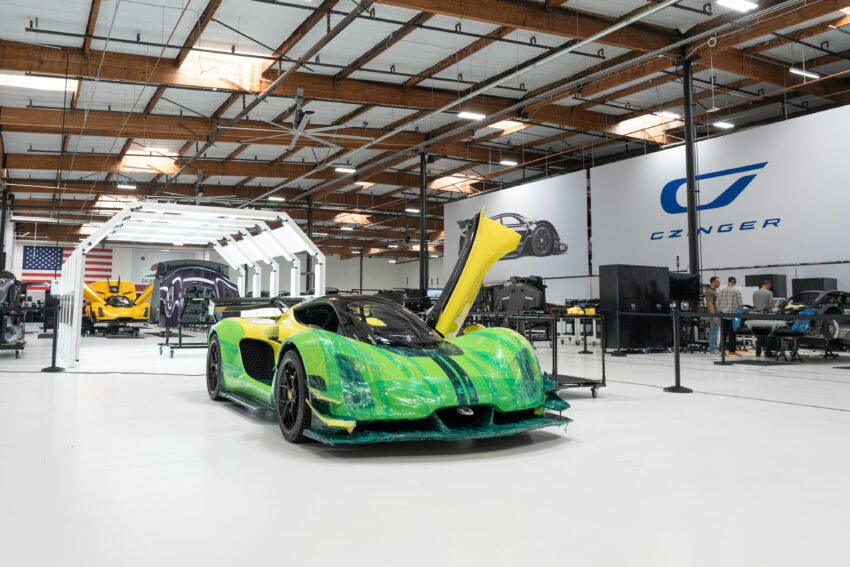
the czinger 21c is a halo car The Czinger 21C represents a significant intersection between high-performance automotive engineering and advanced manufacturing techniques, suggesting a future where civilian vehicles may increasingly share technologies with military applications.
the czinger 21c is a halo car
Introduction to the Czinger 21C
In the realm of hypercars, the Czinger 21C stands out not only for its staggering performance but also for its innovative manufacturing process. Priced at $2.35 million, this vehicle boasts an impressive 1,250 horsepower, making it a formidable contender in the hypercar market. However, its significance extends beyond mere numbers; the 21C is emblematic of a growing trend where civilian automotive technology converges with military-grade engineering.
The Manufacturing Process
One of the most striking features of the Czinger 21C is its production method, which utilizes advanced 3D printing technology. The components of the 21C are crafted layer by layer in machines that are often used for military applications. This method not only allows for intricate designs and lightweight structures but also reduces waste, a crucial factor in modern manufacturing.
3D Printing and Its Implications
The use of 3D printing in the automotive sector is not entirely new, but Czinger’s approach elevates it to a new level. By employing additive manufacturing techniques, the company can create parts that traditional manufacturing methods would struggle to produce. This includes complex geometries that enhance aerodynamics and structural integrity.
Moreover, the implications of this technology extend beyond the automotive industry. The military has long been interested in 3D printing for its potential to produce spare parts on-demand, reducing the need for extensive supply chains. The crossover of these technologies suggests a future where civilian and military applications are increasingly intertwined.
Performance and Specifications
The Czinger 21C is not just a showcase of advanced manufacturing; it is also a high-performance machine. With a power-to-weight ratio that rivals some of the fastest cars in the world, the 21C can accelerate from 0 to 60 mph in a mere 1.9 seconds. This performance is achieved through a combination of a lightweight chassis and a powerful hybrid powertrain that includes a twin-turbo V8 engine paired with two electric motors.
Hybrid Powertrain
The hybrid system is particularly noteworthy, as it combines the best of both worlds: the raw power of a combustion engine with the efficiency and responsiveness of electric motors. This not only enhances performance but also aligns with the automotive industry’s shift towards more sustainable technologies. The integration of electric motors allows for instant torque delivery, significantly improving acceleration and responsiveness.
Design and Aerodynamics
Aesthetically, the Czinger 21C is a work of art. Its design is not merely for show; it is engineered for optimal aerodynamics. The sleek lines and aggressive stance contribute to its performance, allowing it to slice through the air with minimal drag. The car’s active aerodynamics further enhance its capabilities, adjusting in real-time to optimize downforce and stability at high speeds.
Market Position and Competition
In the hypercar market, the Czinger 21C faces stiff competition from established names like Bugatti, McLaren, and Ferrari. Each of these manufacturers has its own legacy and technological advancements, making the landscape highly competitive. However, the Czinger 21C’s unique manufacturing process and hybrid powertrain give it a distinctive edge.
Target Audience
The target audience for the Czinger 21C is not just affluent car enthusiasts but also those interested in cutting-edge technology and innovation. As consumers become more aware of the environmental impact of their choices, the hybrid nature of the 21C may appeal to a demographic that values sustainability alongside performance.
Stakeholder Reactions
The introduction of the Czinger 21C has elicited a range of reactions from industry stakeholders. Automotive enthusiasts have praised its innovative design and performance metrics, while critics have raised questions about its price point and practicality for everyday use. Additionally, the military implications of its manufacturing process have sparked discussions about the future of automotive technology in defense applications.
Industry Experts
Industry experts have noted that the Czinger 21C could serve as a catalyst for change within the automotive sector. As more manufacturers explore 3D printing and hybrid technologies, the landscape of automotive engineering may shift dramatically. This could lead to a new era of vehicles that are not only faster and more efficient but also more sustainable.
Consumer Perspectives
From a consumer standpoint, the Czinger 21C represents a blend of luxury and cutting-edge technology. For many, owning a hypercar is not just about performance but also about being part of an exclusive club that values innovation. The 21C’s unique features may attract buyers who are looking for something beyond traditional hypercar offerings.
Future Implications
The Czinger 21C is more than just a hypercar; it is a glimpse into the future of automotive technology. As the lines between civilian and military applications continue to blur, we may see more vehicles that incorporate advanced manufacturing techniques and hybrid technologies. This could lead to a new wave of innovation in the automotive sector, pushing the boundaries of what is possible.
Potential for Military Applications
The potential military applications of the technologies used in the Czinger 21C are significant. As defense contractors explore ways to enhance their vehicles and equipment, the techniques pioneered by Czinger could play a role in developing next-generation military assets. This includes everything from lightweight armored vehicles to advanced reconnaissance drones.
Environmental Considerations
As the automotive industry grapples with environmental concerns, the Czinger 21C’s hybrid powertrain may serve as a model for future vehicles. The integration of electric motors with traditional combustion engines could pave the way for more sustainable performance vehicles. This shift is crucial as governments and consumers alike demand greener alternatives.
Conclusion
The Czinger 21C stands at the forefront of a new era in automotive engineering, where performance, sustainability, and advanced manufacturing converge. Its unique blend of technology and design not only positions it as a leader in the hypercar market but also as a potential influencer in the military-industrial complex. As we look to the future, the implications of the 21C’s innovations may extend far beyond the racetrack, shaping the next generation of vehicles for both civilian and military applications.
Source: Original report
Was this helpful?
Last Modified: November 6, 2025 at 5:39 pm
3 views















